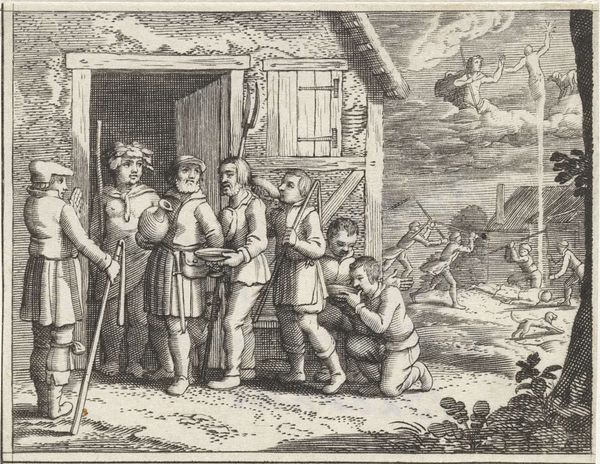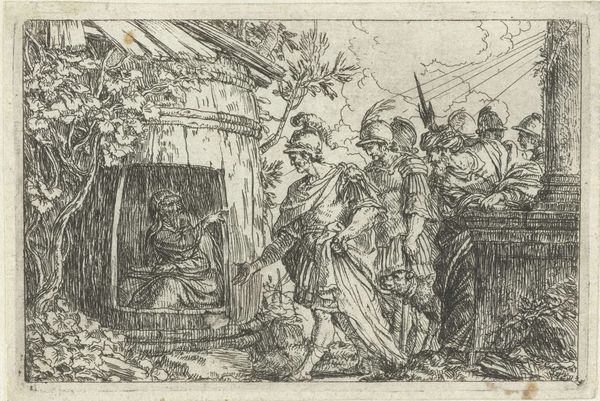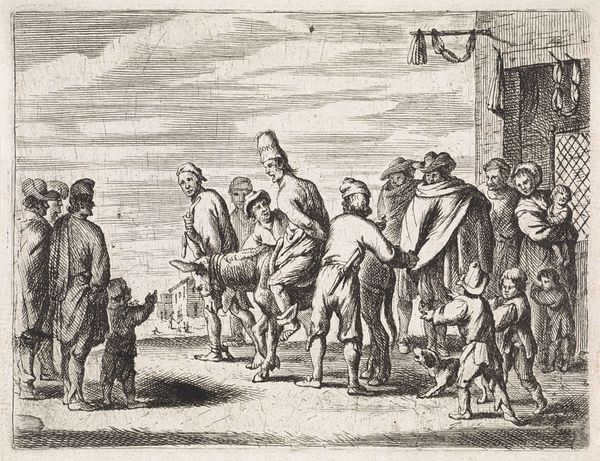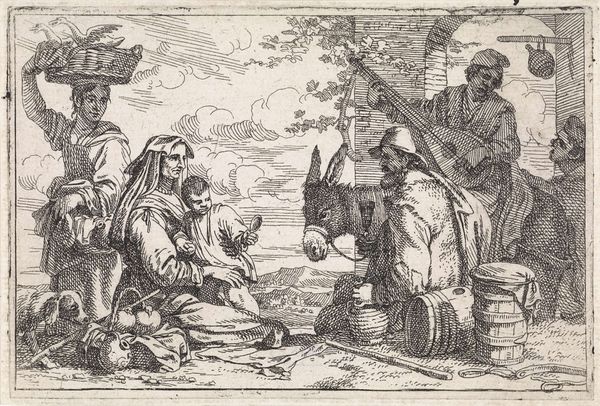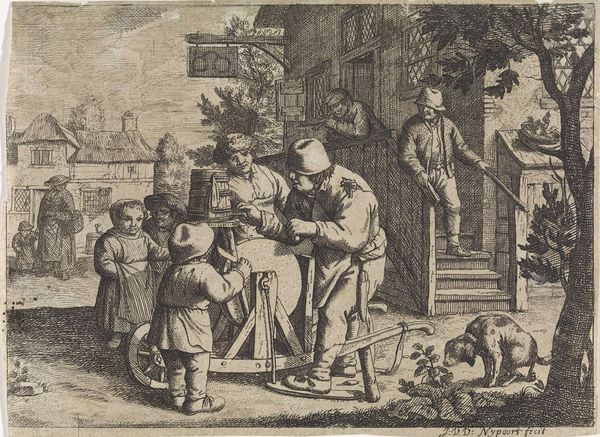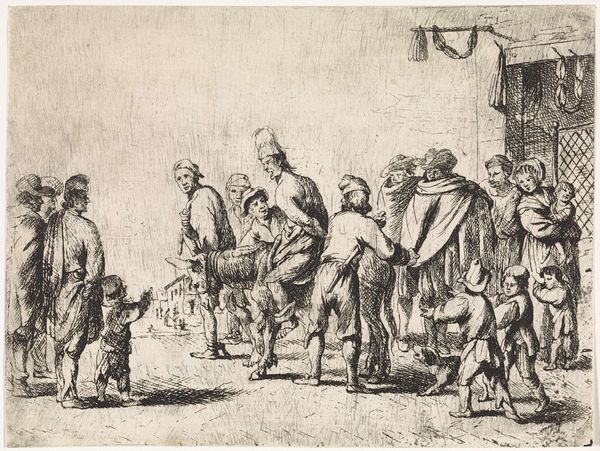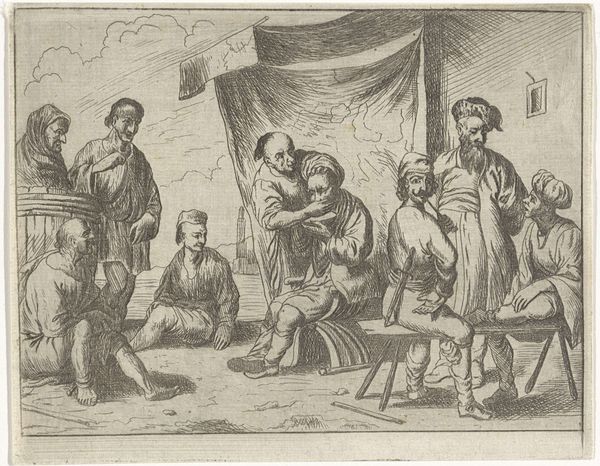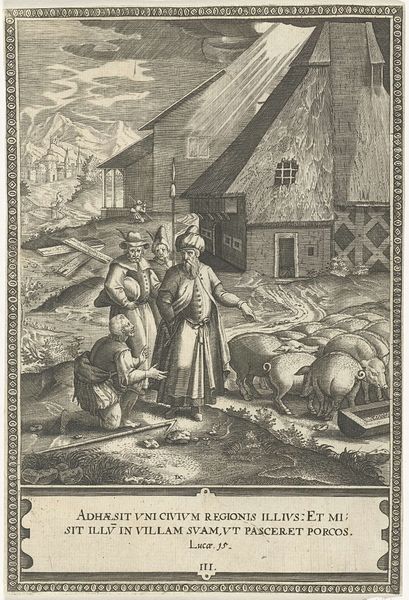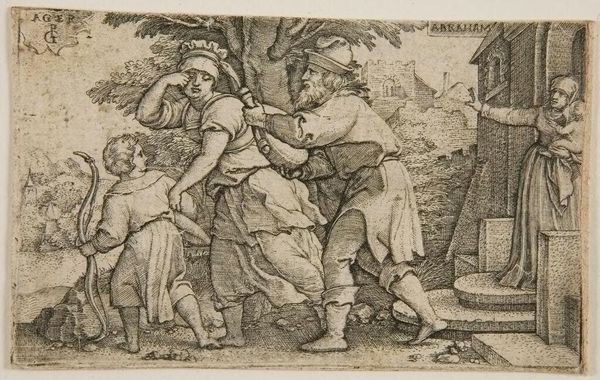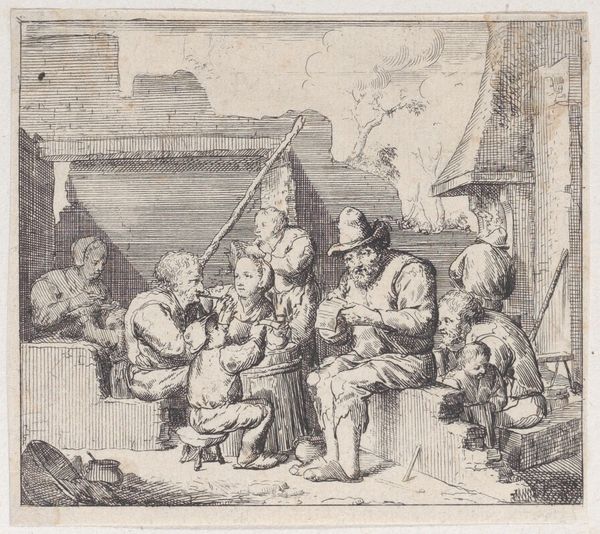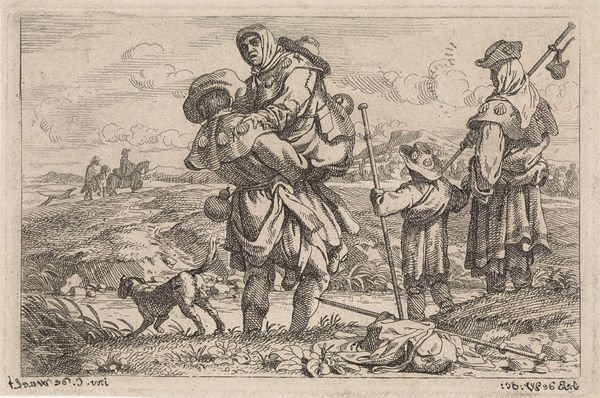
print, engraving
#
baroque
#
dutch-golden-age
# print
#
figuration
#
genre-painting
#
history-painting
#
engraving
Dimensions: height 77 mm, width 128 mm
Copyright: Rijks Museum: Open Domain
Editor: Here we have Jacob Matham's "Bacchus met wijn bij boeren," from 1616, currently held in the Rijksmuseum. It's an engraving and portrays Bacchus with peasants. I am struck by how the scene is rendered. The composition shows people engaged in labor and leisure, and this feels very material-based and relatable. What do you see here? Curator: Indeed, the print medium itself is central. Engravings were relatively accessible, implying a wider, less elite audience than, say, an oil painting. This affects how we consider the imagery of Bacchus interacting with common folk. It reduces Bacchus to almost a worker like any other peasant, doesn’t it? Editor: So the choice of printmaking democratizes the image of Bacchus? I see your point! I am wondering, how did this democratizing effect tie in with the prevailing social perceptions of labor and leisure? Curator: Exactly. The Dutch Golden Age witnessed increasing trade and wealth. Images like this, readily available as prints, reflect that new class dynamics. What does it mean to see Bacchus depicted *with* rather than above the working class? Matham is asking us to examine how pleasure and the product of labor intersect and are consumed by both mythological figures and regular people. Editor: So it's about showing how the wealthy indulge but also about the peasants as producers, suggesting they are participating in a network of leisure, right? Almost like, work hard play hard, and everyone can join in with different impacts. Curator: Precisely! It moves us away from only celebrating gods toward reflecting on socio-economic production. How class and leisure, expressed through production materials and consumerist themes, shape each other is more apparent in Matham’s time period, due to more trade routes. This challenges old traditional, idealistic art appreciation views. Editor: Thank you! I can now see this print is very much about labor and class in ways I missed, like seeing Bacchus not as a god, but a piece in the era’s puzzle. Curator: Absolutely. I would now look at materials, production, consumption and related labor-themed subjects differently than how it may appear superficially.
Comments
No comments
Be the first to comment and join the conversation on the ultimate creative platform.
